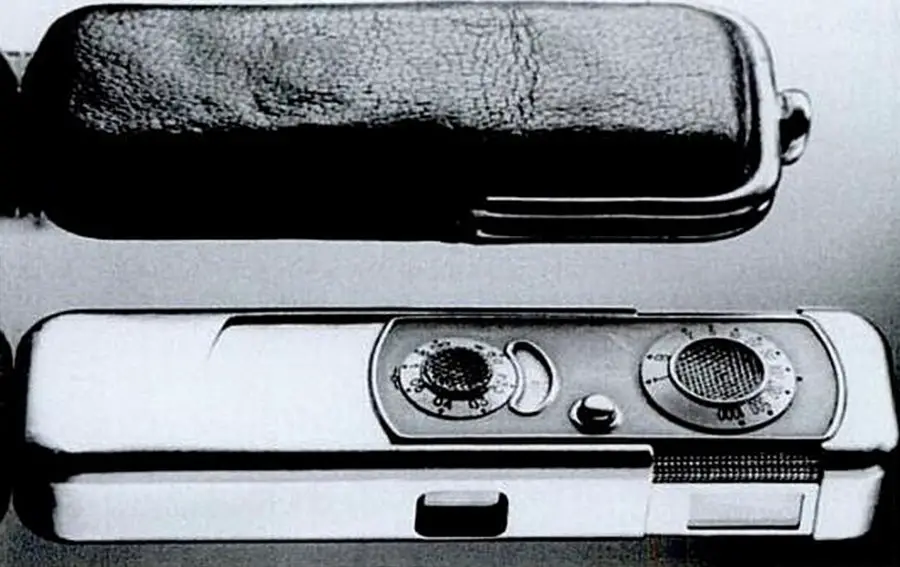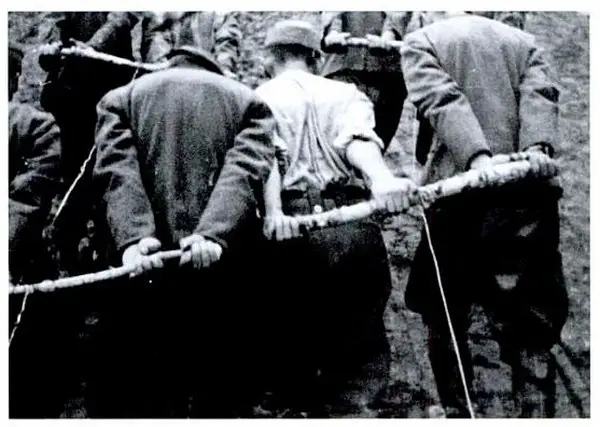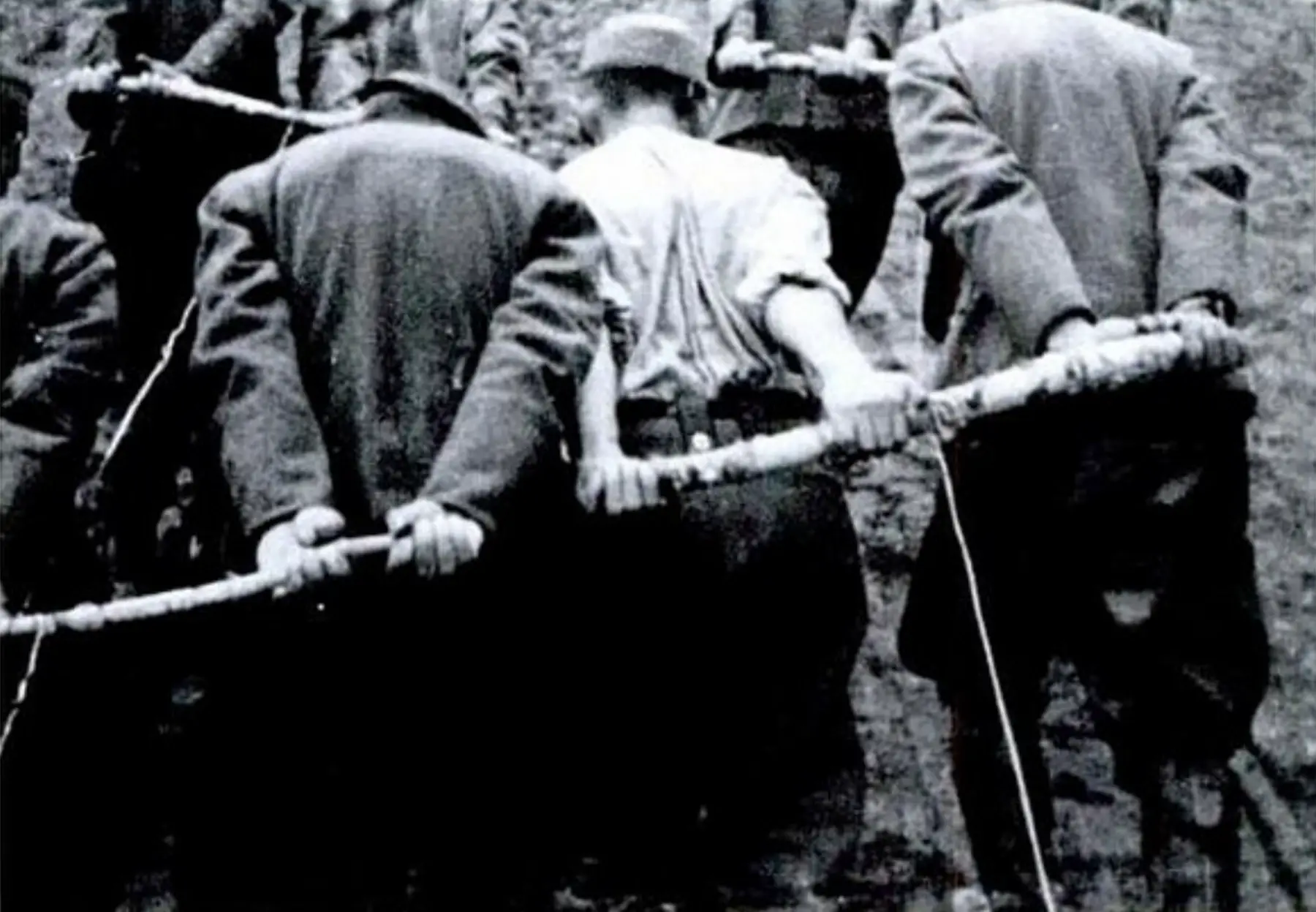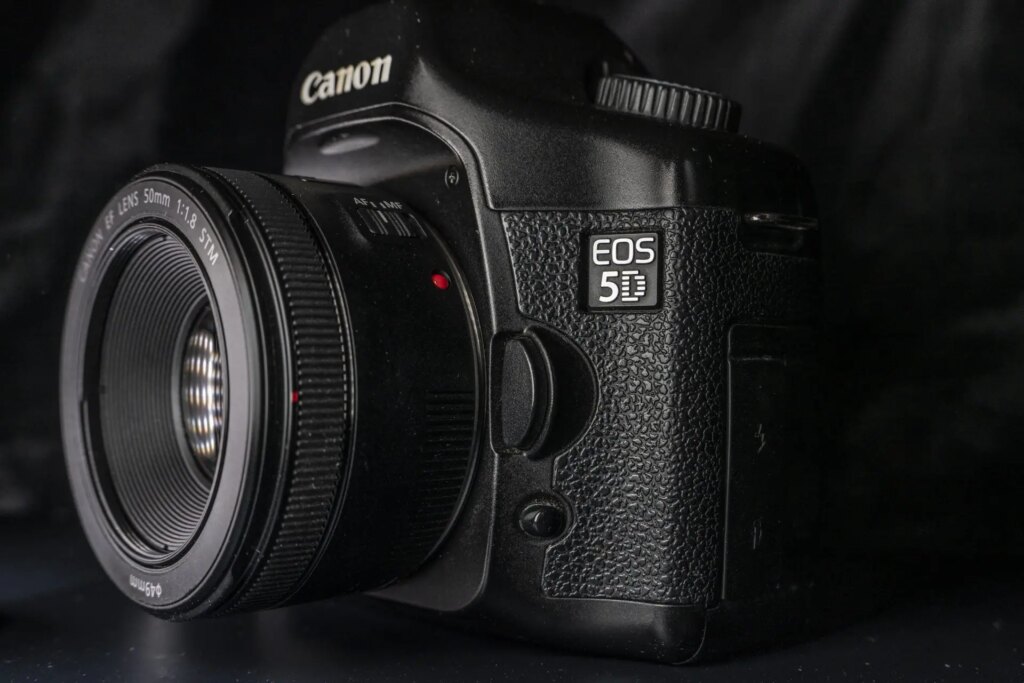In 1999, an exhibition opened at the Culture Museum in the town of Osnabruck. Germany. The photographs attracted a lot of attention, because they were taken between the years 1945 – 1947 by a German officer of the Wehrmacht, in 3 locations of Soviet POW camps in Russia: Selenodolsk, Jelabuga and Kolstau. More interesting was the fact that the officer, Klauss Sasse, took all the 90 images with his Minox Riga camera, smuggled in the camp by himself, together with the film.

Minox Riga, belonging to Klaus Sasse – the camera he used in the prisoner’s camp
During his time as a prisoner, Sasse managed to take pictures of fellow prisoners, images of the camps, of his captors, and many other places and people, shooting a number of 4 rolls containing 50 exposures each, the films packed by the Latvian factory VEF in Riga, the one responsible for the apparition of the Minox Riga.
His book “Bilder aus russischer Kriegsgefangenschaft: Erinnerungen und Fotos aus Jelabuga und anderen sowjetischen Lagern 1945-1949” is well worth of reading, because apart form the photographs and daily life notes, it speaks volumes about the tens of thousands of German prisoners who never got back home. Klaus Sasse was a fortunate man, he made it back to Germany and lived a long life thereafter.

It beggars belief that a German prisoner of war, being interned in a Soviet war camp known for their lack of respect for human life, was so bold and (to some point, so lucky) to engage in covert photography with a smuggled camera AND not been discovered. The Minox Riga or the films, if found on him, would’ve meant certain death, probably immediate without any hearing. The fact that he lived to tell the tale and to publish his photographs says a lot about luck, courage and, at some point probably, danger of life forfeiture.
With the appropriate observation of the copyright where is due, I am publishing some of the photographs, retrieved from the online medium. All photographs here are copyrighted to the rightful owners.

It is but a stroke of luck that these photographs were taken and the films smuggled for them to survive and be presented to us today. This is but one example (and a brilliant one at that) about how the Minox cameras have been witnesses to the history in the making. This is what I would call a true historical camera.
This here is a video made by me. It contains copyrighted material, I only made them a bit more viewable, and published it on my YT channel. Do enjoy!
Share this post:






Comments
David Dutchison on Minox Photographs Smuggled from a Soviet Camp
Comment posted: 10/02/2024
Comment posted: 10/02/2024
D Evan Bedford on Minox Photographs Smuggled from a Soviet Camp
Comment posted: 11/02/2024
Comment posted: 11/02/2024
Peter Roberts on Minox Photographs Smuggled from a Soviet Camp
Comment posted: 11/02/2024
As Solzhenityn has been mentioned it is worth remembering that many Russians suffered the same fate on return to their Motherland for the "crime" having been captured, or merely to have had a glimpse of Western society, laid to waste and despoiled though it may have been.
A timely reminder that the aftermath and consequences of conflict are all too often forgotten or ignored.
Thank you for this, Julian.
Comment posted: 11/02/2024
tjwspm on Minox Photographs Smuggled from a Soviet Camp
Comment posted: 17/02/2024
But then the actual story touched me even more. As a German, I have previously learned first-hand from stories about the terrible treatment of Russian prisoners of war in the German Reich. Sasse describes in nuanced ways the good and bad treatment that he himself experienced in the Russian camps. About the female Russian doctor who helped him and the German doctor, a prisoner of war like him, who didn't treat him well. And his assessment that the Russian population was hardly better off than the German prisoners of war. That touched me very much.
Comment posted: 17/02/2024
Joseph Irvin on Minox Photographs Smuggled from a Soviet Camp
Comment posted: 14/03/2024